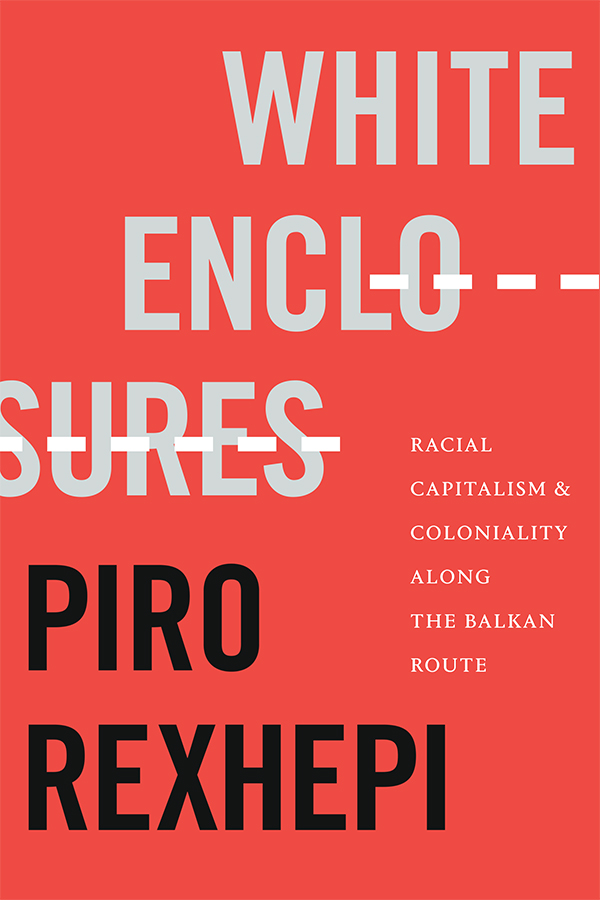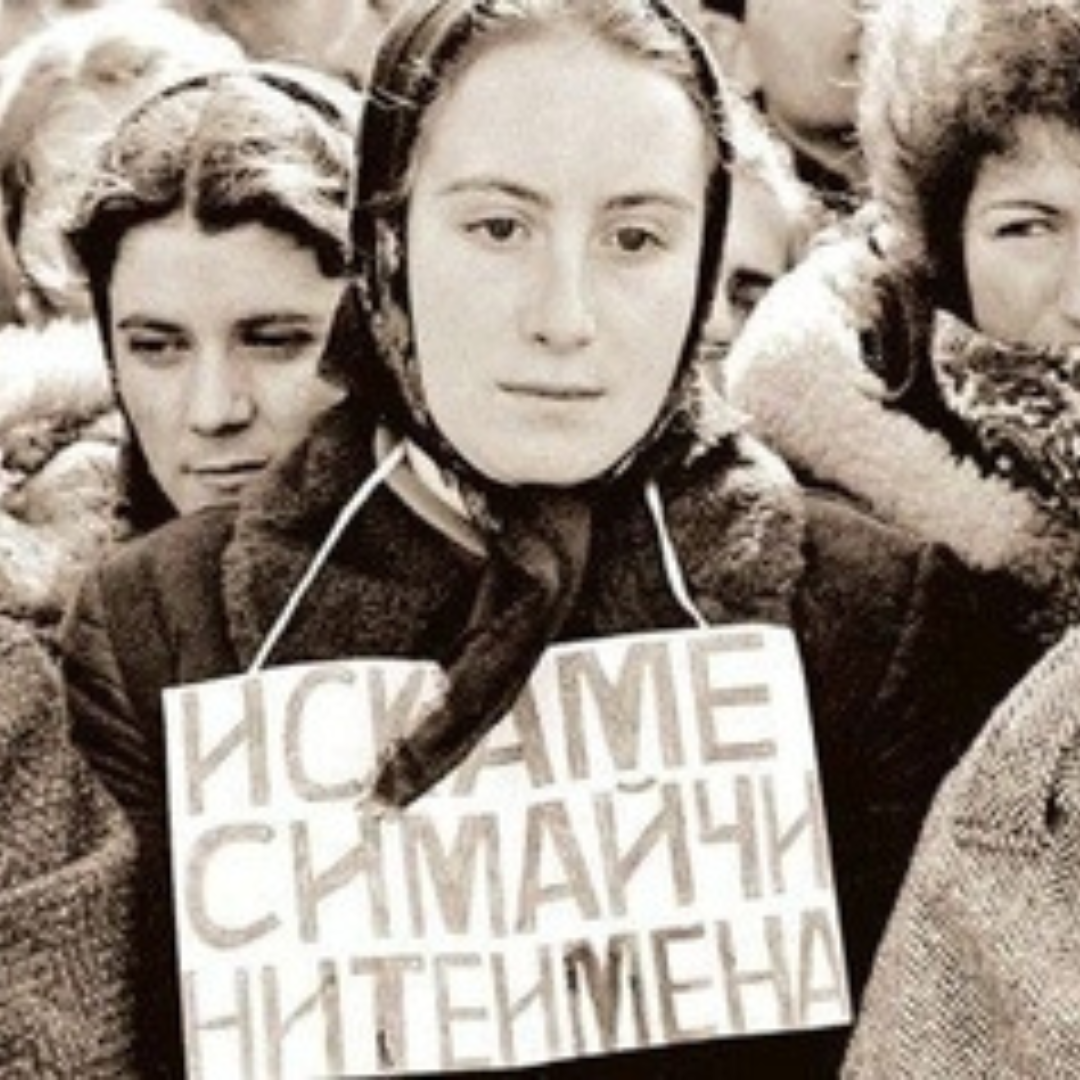Race and coloniality in the Balkans

Published by: Duke University Press

Piro Rexhepi’s White Enclosures represents an innovative and interdisciplinary work that situates the post-Ottoman Balkans—and specifically its Muslim inhabitants—within global systems of coloniality and racialization. Part of Duke University Press’s series “On Decoloniality,” the book’s introduction and five concise chapters combine historical research, ethnographic fieldwork, and contemporary socio-political analysis rooted in critical theory. According to Rexhepi, the Balkans form a frontier on the global “geopolitics of whiteness,” walling off, much like the US-Mexico border, wealthy Euro-Atlantic “enclosures” from the non-white world. Academic observers of the refugee crisis along the “Balkan Route” since the mid-2010s may already be sympathetic toward this argument, but Rexhepi takes it further. Rather than a recent development, he traces its genealogy to the early 20th century establishment and consolidation of European nation-states on the ruins of the Ottoman Empire. Drawing on the work of scholars such as Fatima El-Tayeb and Robert Vitalis, Rexhepi sees this process as suffused with Western anxieties over race and the intrusion of non-European “others” from the outset. Centering the experiences of the post-Ottoman Muslim communities that faced displacement and violence as a result, Rexhepi shows how these concerns have persisted across various historical contexts to the present. The Balkans that emerge from Rexhepi’s analysis thus appear as an important site in the global maintenance of colonial and racial hierarchies, as well as one whose own history and present circumstances cannot fully make sense without reference to this wider context.
White Enclosures is only partly a work of history, but it makes several distinguishable interventions in the historiography of the modern Balkans. In the first place, Rexhepi’s book challenges legacies of Eurocentrism and statism. From its origins, modern historical writing on the Balkans has been closely tied to the rise of its post-Ottoman nation states, epitomized by such works as Leopold von Ranke’s 1829 study of “the Serbian Revolution.” Even well into the 20th century, such narratives downplayed the region’s significant Muslim populations, at best depicting them as silent casualties of Ottoman decline and the inevitable triumph of anti-Ottoman nationalist movements. While scholarship took a more critical view of ethnic nationalism in the 1990s, the underlying reading of modern Balkan history as a story of gradual reintegration into Europe and shedding of the Ottoman past persisted. The most influential work in this vein, Maria Todorova’s Imagining the Balkans, thus argued that the Balkans’ racial and religious resemblance to the West rendered them beyond the scope of postcolonial theory; where Edward Said’s “Orientalism” dealt with “difference between (imputed) types,” her “Balkanism” centered on “difference within one [European] type” (p. 19).
Rexhepi offers a different perspective. His Balkans are firmly part of Europe, but one enduringly defined by its proximity to the non-European Orient. Europe here is a hierarchical and exclusionary space for which the region serves as a peripheral buffer zone, defined by ongoing coercion and violence against racialized others—Balkan Muslims included. Rexhepi thus documents how Western observers branded Roma, Albanians, and Bosniaks not simply as lesser Europeans à la Balkanism, but potentially alien to Europe entirely. Post-Ottoman states therefore variously viewed their expulsion as integral to “Europeanization” or otherwise pressured them to justify their very existence on the continent through affective conformity to white European standards. As but one exemplary piece of visual evidence, he offers a 1913 Bulgarian poster celebrating the expulsion of Muslims from the gated “paradise” of “Europe” in the Balkan Wars—a metaphor with striking similarities to the European Union’s Foreign Affairs chief Josep Borrell’s 2022 comments comparing Europe to a “garden” threatened by invasion from the surrounding “jungle.”
For Rexhepi, this Western deputization of Balkan states to violently maintain European order against external threats forms part of a pattern leading all the way to anti-migrant violence on the Balkan route today.
Rexhepi’s book also fits within the ongoing “decolonial” turn in scholarship on Eastern Europe, situating Balkan Muslims’ post-Ottoman experiences within wider processes of colonialism and racialization. The author’s subversive treatment of Albanian nationalist narratives is instructive here. Where traditional historiography celebrates Albania’s independence in 1912 as the fulfillment of longstanding national aspirations, chapter three of “White Enclosures” focuses on a Pan-Islamist rebellion against the new Albanian state that nationalist accounts often omit or vilify. Led by Sheikh Haxhi Qamili in the summer of 1914, the revolt rejected the European-led International Control Commission for the country and its appointed German prince, demanding instead Albania’s return to the Ottoman Empire as an autonomous province. We learn from Rexhepi’s research that this struggle also resonated in the colonial world, with Indian Muslims reporting on 2,000 local volunteers seeking to join the fight. The revolt ultimately succeeded in taking over the country for 8 months before Western powers enlisted neighboring Serbia to crush it for the sake of maintaining the “credibility of European prestige.” For Rexhepi, this Western deputization of Balkan states to violently maintain European order against external threats forms part of a pattern leading all the way to anti-migrant violence on the Balkan route today. An additional insight of White Enclosures, drawing on wider postcolonial studies, lies in how these colonial dynamics affected Balkan Muslim self-conceptions. Chapter four notably examines this through the history of sexuality, tracing how European oversight and ideological pressure following the crushing of Qamili’s rebellion led to the disappearance of the once-common figure of the köçek (cross-dressing street performers) from Albanian towns.
Finally, Rexhepi’s book offers a challenge to more sympathetic histories of state socialism in the region. Here his intervention resembles broader leftist reckonings with how and to what extent class-centered readings of the past can account for racial and other divisions. But whereas these debates have garnered considerable attention over the past decade in the United States and other Western countries, they are comparatively absent in the Balkans, where left-leaning historians have tended to frame the socialist period as an emancipatory project aspiring to ethnic coexistence, especially in comparison to the genocidal violence and neoliberal restructuring that followed. Rexhepi stresses the shortcomings of these more favorable readings by centering the perspective of racialized groups excluded from the state’s modernizing vision. In a welcome change to even much of the literature on Muslims in the Balkans, White Enclosures thus devotes considerable space to Roma Muslims in Bulgaria, whose experience of prejudice and state violence—in particular displacement from urban centers via the authorities’ manipulation of housing permits and subsequent demolition of homes—represents a continuity from the socialist to the post-socialist period. Emphasizing demographic panics about Roma “birth rates” as threatening Bulgaria’s white majority in the country’s politics and media, Rexhepi also points out the similar discourse that had emerged in Yugoslavia vis-à-vis Kosovar Albanians and Bosnian Muslims in the 1970s and 80s, suggesting that we could productively consider the Cold War Balkans as a “primary site of the early globalization of Islamophobia” (p. 200).
These connections between often-neglected historical episodes, his recent ethnographic fieldwork, and global processes represent a recurring strength of Rexhepi’s book. Many others, such as its treatment of gender and sexuality and postcolonial perspectives on Bosnian history, deserve further elaboration than possible in this brief review. Rexhepi’s provocative interventions in many aspects of the existing literature may well draw disagreement and provide inspiration to historians in equal measure, but his interpretation of the Balkans’ place in relation to topics of international concern in the humanities undoubtedly has the potential to move the scholarly discussion forward.
Harun Buljina is an independent scholar based in Boston. Originally from Sarajevo, he holds a Ph.D. in History from Columbia University and was most recently a Research Associate at Harvard University’s Center for Middle Eastern Studies. His research and published work traces the history of Islamic reform movements in the late and post-Ottoman Balkans, with a focus on Bosnia-Herzegovina.
